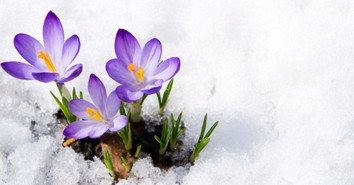Jones's The Homesman the Best Western Since Unforgiven

DVD Release Date: February 17, 2015
Theatrical Release Date: November 14, 2014 limited; wider December 5
Rating: R (for violence, language, sexual content, some disturbing psychotic behavior, and nudity)
Genre: Western
Run Time: 122 min
Director: Tommy Lee Jones
Cast: Tommy Lee Jones, Hilary Swank, William Fichtner, John Lithgow, James Spader, Miranda Otto, Meryl Streep, Hailee Steinfeld, Jesse Plemmons
Some movies draw inspiration from classics of the past, and then others seem to draw inspiration beyond cinema to all artistic expressions and forms: literature, poetry, painting, photography, even folklore. The latter are rare, and The Homesman is one of them. It’s the best (and best-looking) western since Clint Eastwood’s Unforgiven over twenty years ago, and is so because it’s as artistically rich as it is emotionally (and spiritually) unsettling. The combination is potent.
Like Unforgiven, there's a bit of a revisionist streak to the The Homesman in that its titular hero is more anti-hero and its view of the times is more indictment than veneration. More deeply, it serves as a metaphor of humanity's masculine and feminine duality, and how the social Darwinism of aggressive masculinity destroys both the tenderness and strength of feminine virtue. The film's stark images also serve as bleak metaphors, with a Western landscape that embodies the very nature of the story itself: a brutal, merciless reality in need of grace.
Some have called this a Feminist Western, but that's too easy a reduction. The Homesman examines the human condition at a much more primal, and pure, level than can be constrained by modern political labels and ideologies. This is a genuinely thought-provoking, and often disturbing, look at humanity itself.
This Western/Humanity metaphor finds its primary basis in three women who, after a long winter of personal hardships in 1850s Nebraska territory, have gone insane. Their husbands range from clueless to abusive (psychologically and sexually), and their lack of compassion or understanding seems to fit right into the fabric of this cruel, barren environment. As a consequence, the women have not only lost their minds but have turned violent, at times lashing out as if possessed.
When none of the town's men volunteer to bring the women east to Iowa for proper mental care, middle-age spinster Mary Bee Cuddy (Hilary Swank, Amelia) steps in to help, not simply because her marriage prospects have dried up but also because she's the town's lone soul of compassion – especially as she shows hints of her own mental health struggles.
By being the women's "homesman" (a guide who leads settlers back east for various reasons), Cuddy – who one local elder says is "as much of a man" as any he's seen – takes on what is considered a man's job. This serves as a thematic through-line for the film, of how men (the brutality of human nature, when at its worst) fail to meet their responsibilities to women (the beauty of human nature, when at its best), not just in vocation or gender roles but also in care, respect, and chivalry. Masculinity without valor or virtue is as harsh and debilitating as the unforgiving West itself. And when one piles itself on the other, it breaks women down.
Early in her trek east, Cuddy comes across George Briggs (Tommy Lee Jones, Lincoln, also director and co-writer), a man set atop a horse and caught in a hangman’s noose (as penalty for a crime), waiting for fate to take its lethal course. Cuddy sets Briggs free on the condition he serves as their homesman. He does, although initially he’s no more considerate or sacrificial than the selfish men Cuddy left behind. Briggs has accepted the world as cruel, but Cuddy – despite all the evidence to the contrary – refuses to, still holding out hope.
This “road trip” construct creates a series of vignettes that each serve to reinforce the themes of nature destroying beauty, as well as offering up meaty performance cameos from the likes of Meryl Streep, John Lithgow, James Spader, and more. Along the way, Cuddy makes attempts at finding some level of humanity in Briggs – perhaps even love – but she meets dead ends, further breaking down her reserves of strength and courage, and compounding her ever-growing sense of loneliness. Swank delivers a heart-breaking portrayal of courage, anguish, and sorrow that’s arguably the best of her multi-Oscar-winning career.
Yet as this unforgiving culture takes its toll on Cuddy, and as the condition of the women deteriorates, Briggs begins to understand their plight as they come across men of means who either turn cold shoulders to their needs, or actually try to exploit them. As Briggs becomes aware of his own culpability, shame sets in – and then so too does vengeance toward those who lack kindness and charity, giving them violent doses of their own callous medicine.
Many may be too quick to dismiss this as a mere passion project for actor/director Tommy Lee Jones (which would explain the surprising lack of awards-season buzz), but in truth this is as assured a directorial effort as any we’ve seen this year. Worthy of being seen on a big screen canvas, Jones evokes the epic vistas of John Ford (that also glean inspiration from pastoral American paintings and old 1800s glass-plate photography), the formal-yet-quirky language of the Coen Brothers, and the Nature vs. Grace spirituality of Terrence Malick. His lament of frontier life is really a critique of the darker angels of our nature, and the virtues needed to overcome them. Along with his own compelling performance, Jones has crafted a substantial work of poignancy, pathos, and power.
A heavy sense of despair permeates The Homesman, but one that evokes empathy and introspection rather than simply some oppressive moviegoing slog. When Streep’s minister wife says to Briggs, “You must’ve had an awful winter,” her literal observation also carries the subtext of existential crisis, of physical and psychological torment that reflects a spiritual one. Like that moment, the entire film is constantly playing on multiple levels, all while being impeccably crafted (at times, truly breathtaking). Yet despite its strengths, The Homesman doesn’t appear bound to be a classic. But wow, it sure feels like one.
CAUTIONS (may contain spoilers):
- Drugs/Alcohol Content: Some tobacco use.
- Language/Profanity: Frequent expletives, from the H-word to a few SOBs, with the “GD” profanity of the Lord’s name in vain being the most used. Some scatological slang terms.
- Sexual Content/Nudity: Two portrayals of forced sex/intercourse by a husband toward a wife. A moment of breast-feeding. The nude backside of three women as they bathe in a stream. Two different shots of topless women. A female nude figure in silhouette. A woman lies with a man under a blanket of buffalo hide; they begin to have sex. A couple of verbal references to sexual acts.
- Violence/Other: Disturbing, violent conduct by mentally unstable women (from lashing out at people, to a woman who self-mutilates by cutting her naked upper-torso in various places). A baby is thrown into an outhouse toilet. One woman kicks another in the face repeatedly. A violent fight between two men, including strangling. A woman shoots a man dead. A person is hanged, dead. A man is shot in the foot.
Publication date: December 2, 2014
Originally published December 02, 2014.





